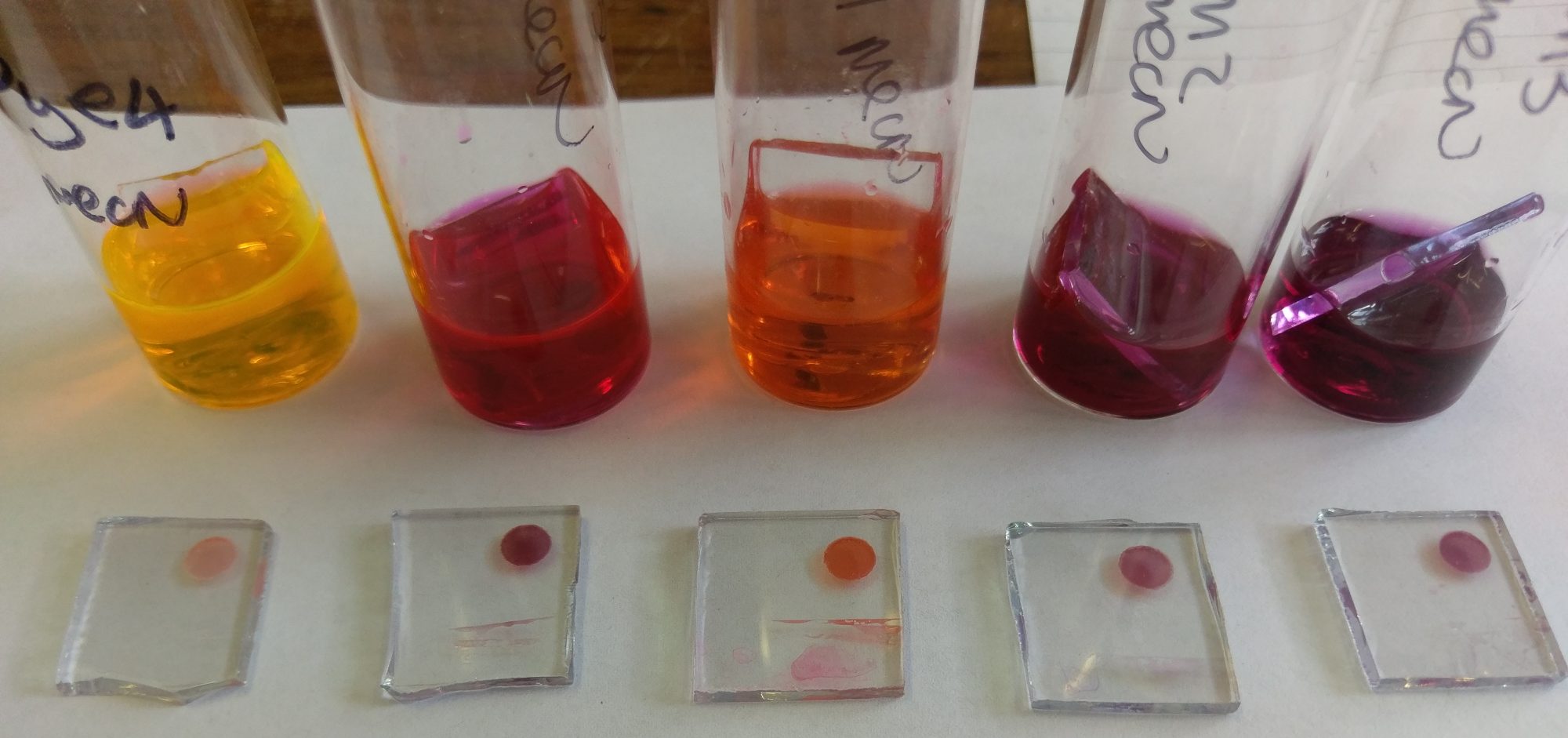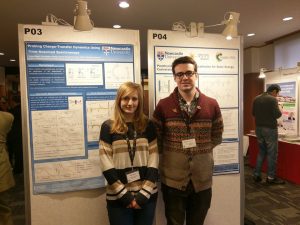The Artificial Photosynthesis: Faraday Discussion was held in the beautiful city of Kyoto between the 28th February and 2nd March 2017 and was the first Faraday Discussion ever held in Japan. This three-day event brought together delegates from a diverse range of institutions across Asia, Europe and America to discuss the latest advancements in systems for solar-driven water splitting and CO2 reduction. Dr Libby Gibson presented an invited paper and Gareth Summers and Fiona Black presented posters. We thank the RSC and the UK Solar Fuels Network for supporting the trip!
A broad range of topics were covered during the discussion. Over the first two days sessions were split into biological approaches to artificial photosynthesis (including fundamental processes and theoretical approaches), molecular catalysts for artificial photosynthesis and inorganic assembly catalysts. On the final day the conference concluded with a session discussing the integration of systems for demonstrating realistic devices.
During the session of biological approaches to artificial photosynthesis a large portion of the discussion was devoted to the structural properties of photosystem II and possible mechanisms of water oxidation by the OEC. Two very interesting papers were presented by Prof. Jian-Ren Shen on computational calculations of the CaMn4O5 cluster of PSII and by Prof. Nobuo Kamiya discussing a 2.2 Å X-ray crystal structure analysis of PSII from a PsbM-deleted mutant. A major point of discussion that arose during this session concerned the relative merits of biomimicry vs. bioinspired chemistry and which approach would be more viable as the relevance of PSII was questioned due to the low number of Mn-based artificial catalysts that have been successfully used.
Prof. Licheng Sun presented an investigation of the temperature dependence of electrocatalytic water oxidation using Co-Pi films where activity increased with increasing temperature. A triple device model consisting of a photothermal collector and a photovoltaic cell-coupled electrolyser was proposed to carry out electrolysis at elevated temperatures, thereby increasing conversion efficiencies. While some of the following discussion raised concerns over the roof area needed for such a model, the most important point highlighted during this session was the need for standardisation of ‘room temperature’ as a reported parameter. This discussion of standardisation and benchmarking was returned to throughout the conference as a crucial aspect for continued work in the field of artificial photosynthesis.
Discussion during the session dedicated to inorganic assembly catalysts for artificial photosynthesis mostly revolved around catalyst stability. Dr. Fabio Di Fonzo discussed his work on hybrid organic/inorganic photocathodes where the stability of a P3HT:PCBM photocathode can be significantly improved using a WO3 hole selective layer paired with a TiO2 electron selective layer. The prepared devices were stable over an impressive experimental duration of 10 hours, with only 30% loss of activity from the initial value.
However, as was noted during the discussion, lab-based stability tests typically range from minutes to hours while a realistic device would need to be stable for a minimum of 5 years to see any widespread integration. This vast difference is a major hurdle that needs to be overcome for devices to leave the lab and contribute to worldwide energy production.
The event concluded with a session discussing the integration of systems for demonstrating realistic devices. Tohru Setoyama from the Mitsubishi Chemical Group discussed the challenges of applying solar hydrogen in industry, with the aim of using solar hydrogen and CO2 to produce lower olefins (ethylene and propylene) to help curb CO2 emissions. It was particularly interesting to see artificial photosynthesis discussed from an industrial viewpoint rather than an academic one. Prof. Daniel Nocera instigated a thought-provoking discussion comparing artificial photosynthesis to a holy grail; the point was raised that artificial photosynthesis will never be able to produce a fuel source cheaper than fossil fuels, unless a widespread carbon tax is introduced. It was argued that efforts should be focused on working together with policy makers or working with the developing world that does not yet have a fossil fuel dependent infrastructure.
Alongside the discussion sessions there were also several tea breaks and poster sessions where the 50 poster presenters could discuss their work with other delegates, providing ample time for networking opportunities with researchers from institutions that would not often meet.

